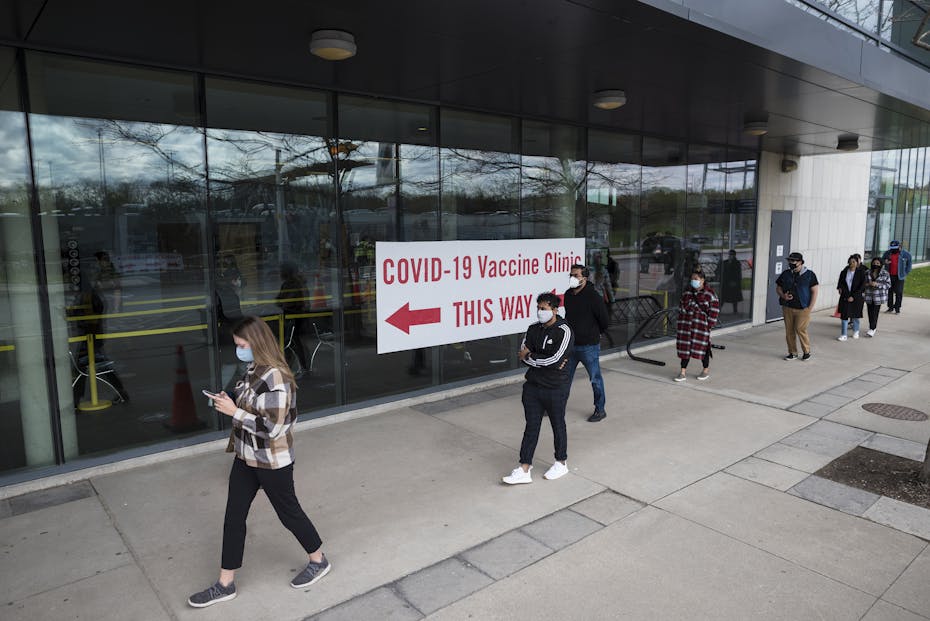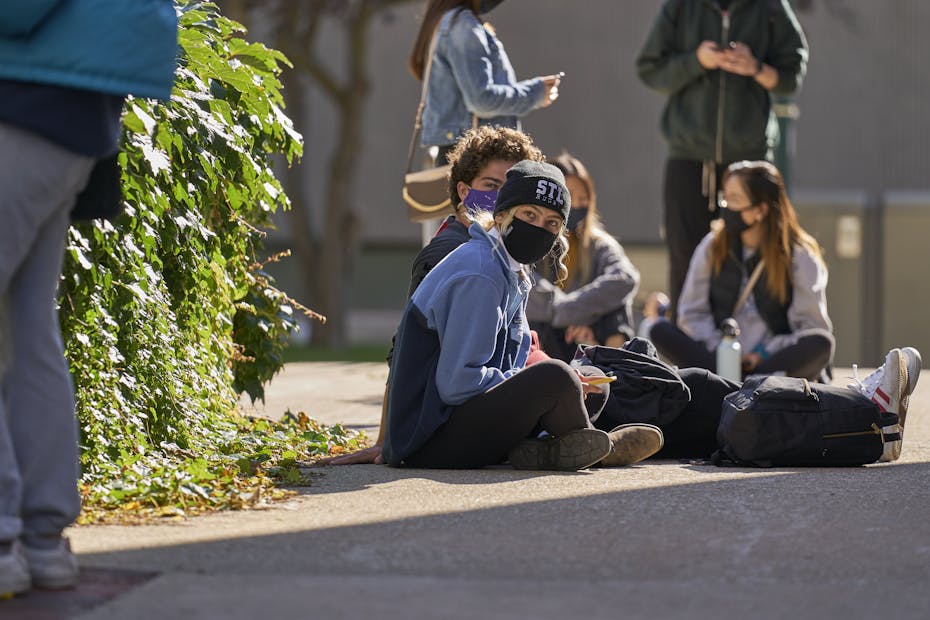
In the United States, more than 600 institutions of higher education are requiring students to be vaccinated to return to campus this fall.
In Canada, Seneca College in Ontario is making vaccination mandatory for anyone attending campus. The University of Ottawa and others will require students living on campus to be vaccinated.
The University of Toronto has announced that in addition to requiring vaccination for students living in residence, it will “require students, faculty, staff and librarians who participate in activities that carry a higher risk of COVID-19 transmission to be vaccinated — and require all community members to self-declare their vaccination status” on an online platform. The university will use “anonymous, aggregate data on vaccination status, by campus,” to inform health and safety measures.
As September approaches, more post-secondary institutions will announce how they are managing COVID-19-related decisions.
We are two researchers with an interest in social and structural determinants of health who have been discussing and writing about the pandemic for the last 16 months.
We are involved in research about increasing COVID-19 knowledge and protective behaviours, and reducing pandemic stress among diverse LGBTQ+ and racialized people, and how harm-reduction programs for people who use drugs, and other addiction services and HIV prevention have changed in response to COVID-19.
While one of us is more supportive of mandatory vaccination on campuses — given voluminous evidence for COVID-19 vaccine safety and effectiveness — we are both nevertheless concerned about mandatory vaccination.
Avoid ‘battleground’ scenario
Our shared experience in social work, public health and ethics, including sexual health and HIV research, leads us to believe that mandating vaccination can risk turning a highly effective and routine public health intervention into a contentious battleground.
What otherwise might be an everyday health behaviour becomes increasingly loaded with stereotypes and assumptions about political motivations that can divide communities and marginalize individuals and their lived experiences.
Our research has shown us that reasons for engaging in practices often not condoned by health researchers and public health officials — such as sharing drug-using equipment — are often complex. And they often make sense in the context of people’s daily realities.
In the case of people living with HIV and people who use drugs, they often have sophisticated understandings and complex interactions with the health-care system. These communities often have innovative ideas about how to better meet the needs of their peers.
Mandatory in public sectors?
The great success of COVID-19 vaccines has led to calls to make them mandatory for health-care workers, for elementary and high-school staff, and in other public sectors.
We have personally followed public health requirements and have been vaccinated. We also recognize that vaccines have been the most impactful public health intervention of the last century. Vaccines save millions of lives every year.
But we also understand that while everyone who lacks antibodies to new coronavirus strains is at risk, the risks of infection, morbidity and mortality are influenced by broader socio-political and economic systems. In this way, COVID-19, like many other infectious diseases that concern public health experts, is rooted in inequity.
Social contexts, inequities
The COVID-19 pandemic has exacerbated pre-existing inequalities among racialized (“visible minority”) communities because of systemic racism in the health-care system, workplaces and living conditions.
Communities that experience the brunt of systemic racism and ongoing colonization, including in the health-care system, may be understandably reluctant or hesitant to get vaccinated. Black and Indigenous communities are navigating especially painful histories with harmful state-sponsored medical interventions.
Engaging these communities about vaccination requires cultural humility and respect.
Some people have medical reasons to not get vaccinated, such as allergies. Others may have religious reasons.
Then there are those considered “anti-vaxxers,” who reject vaccinations despite the evidence for their safety and efficacy.
In Canada, 70 per cent of the population has received at least one vaccine dose. Fifty-six per cent are fully vaccinated.

Risk of infection on campus
We share concerns about the risk of infection on campus and the importance of students getting vaccinated.
We also see rates of vaccination among young people ages 19 to 29 (69 per cent at least one dose, and 46 per cent fully vaccinated) in a positive light, considering they only became eligible recently, and with challenges in vaccine availability across Canada. Assuming single doses translate into fully vaccinated, we are left with questions about the remaining 31 per cent.
We consider two possible stances: mandatory vaccination and vaccine promotion.
Mandatory vaccination
In scenario one, post-secondary institutions view the nearly one-third unvaccinated as a threat — to the health and safety of themselves, other students, faculty and staff on campuses.
Putting aside the small subset unable to be vaccinated for medical or religious reasons, we are left with young persons who may be vaccine-hesitant. Or possibly anti-vaccination.
With the rapidly spreading Delta variant, the unvaccinated are at considerable risk for infection, and transmission to others. Clusters of infection increase risks of further mutations. Mandatory vaccinations might be necessary in this case. But is anything owed to the unvaccinated?
As many people return to workplaces, they want flexibility. Many universities adopted online learning platforms. If the unvaccinated are not permitted to attend in-person classes, they should be offered online alternatives.
Concerns that this will breach students’ privacy and open them up to shaming from instructors and classmates need to be addressed. Shaming people for health choices often backfires, sometimes intensifying their beliefs. We imagine online options being extended to all students during this transition period.
Vaccine promotion
Scenario two, vaccine promotion, considers the role our respective universities have played during the pandemic.
Both the University of Toronto and the University of Windsor host vaccine clinics and offer expert advice.
The University of Windsor (UW) does not require students to be vaccinated to return to campus at this time. It is partnering with UW Students’ Alliance and WE-Spark Health Institute to promote vaccination through peer-engagement and accessible information.
The approach means vaccination is made readily available, including on-campus clinics, and students are given time to make the decision about vaccination.
Incentive-based approaches are another option; they may lead some students “on the fence” to be vaccinated, but are unlikely to sway the truly hesitant.
Scenario two creates options for diverse students from across Canada, with different levels of vaccine access, to return to campus. This approach may be in keeping with the role of universities as bastions of critical debate. As COVID-19 continues to evolve, it will require ongoing vigilance.
Moving forward
In considering a highly consequential policy, we both support dialogue and community engagement, for which our research in Canada and globally has afforded ample evidence. An important way forward is for higher education leaders to consult with students, faculty and staff.
Universities have a short window to be proactive about the fall and winter semesters. They need to consider what a gentler return home for students might look like this time compared to 2020.
Significantly, they should also be considering how they can meaningfully support students, faculty and staff to return and recover from this exceptionally challenging period — one that is not yet over.![]()
Peter A. Newman, Professor, Factor-Inwentash Faculty of Social Work, University of Toronto and Adrian Guta, Associate Professor, School of Social Work, University of Windsor
This article is republished from The Conversation under a Creative Commons license. Read the original article.










